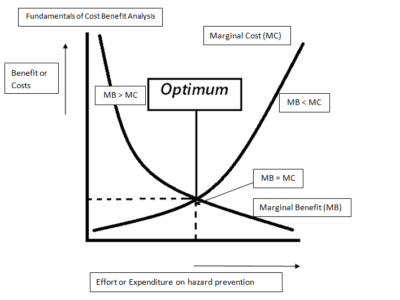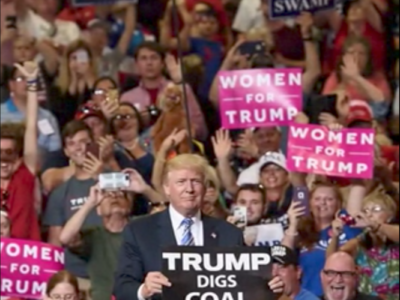Tailoring the tailoring rule – we’re up to 75,000 tpy
Last week, Sean asked whether the EPA was backing off its plan to begin regulating stationary sources of greenhouse gas pollutants under the Clean Air Act. This week, we learn more about the answer (“yes”) and some details about how much it’s backing off (“lots”).
Background: The CAA requires EPA to begin regulating greenhouse gases from stationary sources, like factories and refineries, once greenhouse gases become “subject to regulation” under any other part of the Act. CAA Sec. 165(a)(4). Though the meaning of “subject to regulation” has been heavily debated and litigated (see the Deseret Power case, e.g.), EPA seems to be settling on the view, held under both Bush and Obama, that stationary source regulation must kick in when, but only when, greenhouse gases become subject to actual emissions limits or controls. That will happen for the first time once the proposed federal cars rule limiting GHGs from motor vehicles goes into effect — likely in about a month.
In October, Administrator Jackson proposed the so-called Tailoring Rule, to ensure that only the largest stationary sources would be regulated first. Rather than applying the statutory threshold of 100 – 250 tons of GHG emissions / year as the trigger for stationary source regulation, the Tailoring Rule proposed a higher threshold, of 25,000 tons/yr — one which would obviously let many more facilities go unregulated. Its justification for straying from the statutory threshold was some combination of “we literally can’t handle issuing as many permits as we’d be required to, if we took the statute literally” (aka “administrative necessity”) and “if you make us use the 250 tons/yr threshold, we won’t be able to do our jobs under the Act, and that can’t be what Congress wanted” (aka “absurd results”), with a dash of discretionary enforcement powers thrown in. The Tailoring Rule proposal also predicted that stationary source GHG regulation would kick in around March 2010.
In late Feb., as Sean discusses, a letter from Administrator Jackson to a handful of senators suggested that both the threshold for regulating stationary sources and the timing of those regs would be loosened.
This week, in testimony to Congress and remarks to reporters afterwards, Administrator Jackson gave us more detail on EPA’s plans. (ClimateWire story here, subs. req’d.) It looks like this:
(1) No stationary source will be subject to regulation of GHGs in March 2010 — or any other month in 2010. Instead, these regulations won’t kick in until Jan. 2011. It seems like Jackson has two choices about how to accomplish this: (a) finalize the Tailoring Rule itself to build in this delay, relying again on the administrative necessity and absurd results doctrines, or (b) finalize EPA’s pending interpretation of the phrase “subject to regulation” to mean the time when cars actually become subject to the first emissions limits in the fed cars rule (i.e., Jan. 2011), rather than the finalization of the rule that imposes those emissions limits (likely around Mar. 2010). I got 50 bucks on option b.
(2) The Tailoring Rule threshold will be raised to 75,000 tons per year until about 2013, then lowered to about 50,000 tpy for an unspecified length of time, then eventually lowered further to 25,000 tpy. After that, EPA would consider whether it could administratively handle lower thresholds.
(3) For the first half of 2011, even sources of GHG larger than 75,000 tpy would be excused from compliance IF those sources are not already subject to stationary source controls for other pollutants. I’m not sure how many facilities might fall into this category, since a large GHG source is likely a large source of other pollutants, too — but presumably EPA has something in mind with this exemption.
What does all this mean? The first thing I’ll note is that EPA has now given in to Sen Murkowski’s Fall 2009 demand to delay stationary source GHG regulation for a full year. Murkowski couldn’t even get a floor vote on that proposal a few months back, but seems nevertheless to have won the day — in a sure sign of the weakening political winds for climate regulation, or maybe just for Dems generally. (Murkowski has now moved on, of course, to ask for a full revocation of the EPA’s endangerment finding, which would have the additional effect of knocking out the fed cars rule and likely any other CAA emissions limits.)
Second, an obvious point: Fewer stationary sources will be subject to GHG controls in the coming months and years, absent a new climate bill. But it’s not yet clear how many fewer sources. In its analysis of the original Tailoring Rule 25,000 threshold proposal, EPA wrote that even with that threshold, “nearly 70% of the national GHG emissions” that come from stationary sources would be covered. In this week’s news, EPA claims that backing off to a 50,000 tpy threshold would still capture about 70% of those emissions. Not sure yet how that percentage would be affected by a 75,000 tpy threshold.
Third, and most importantly, none of this will matter if either Sen Murkowski succeeds in her efforts to revoke the endangerment finding, or if Congress passes a very weak energy bill that nevertheless guts CAA authority. So Administrator Jackson is giving up battles to avoid losing the war. At some point we’ll all undoubtedly ask, how many battles equal a war?






Reader Comments